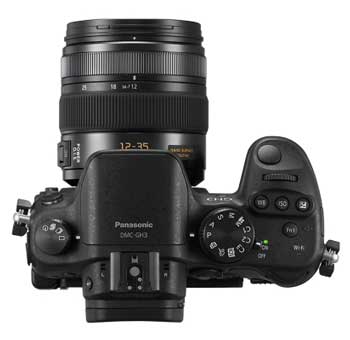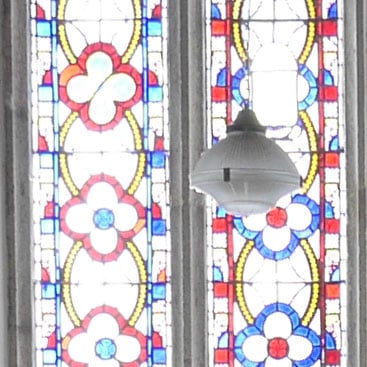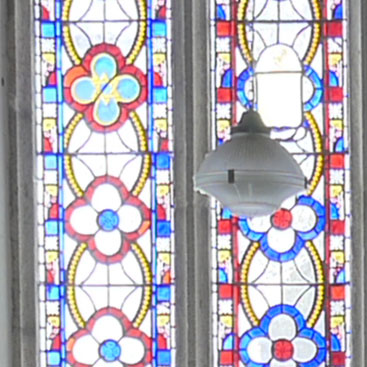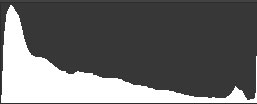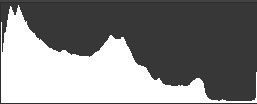Panasonic Lumix GH3 revaluation -
- Codified by
Intro
The Lumix GH3 is Panasonic's flagship Micro Quartet Thirds compact system tv camera. Launched in September 2012 it replaces the Lumix GH2 and Panasonic hopes to repose on the earlier model's report for combining DSLR-like handling with master video features. Indeed, such is the Lumix GH2's reputation among professional videographers that it's known equally if not more so as a movie television camera than a stills one.
For the GH3 Panasonic has updated the sensing element, but kept up the 16 Megapixel resolution of its predecessor. But where the GH2's sensing element had an actual declaration of 18.3 Megapixels, allowing changing of the aspect ratio without cropping, the GH3's sensor operates Sir Thomas More conventionally, consequent in reduced resolution for scene ratios new than the Four Thirds native 4:3. The central processing unit is also updated, providing a new AVCHD pear-shaped HD 1080p 50/60 movie mode with MPEG-4 ALL-I MOV encryption at up to 72Mbps; other video enhancements include outspread inconstant frame range shooting and improved bit rate options. Videographers will also be pleased to learn that Panasonic has replaced the GH2's 2.5mm external mic socket with a 3.5mm one and a headphones socket has too been added.
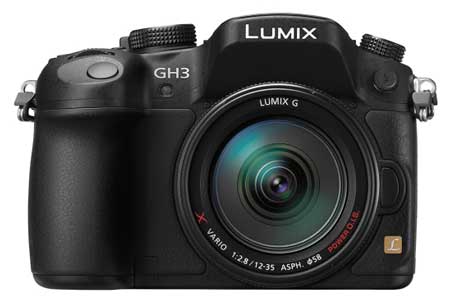
The GH3 also gets a new 3 inch 3:2 aspect ratio OLED touch-test with the resolution bumped to 614 thousand dots besides as a bigger, brighter OLED viewfinder with a 16:9 view ratio and 1.7 one thousand thousand battery-acid resolving. And the ironware refinements don't end there. The Lumix GH3's Magnesium alloy body is brave out sealed, a move widely anticipated in the wake of the earlier announcement of 2 windward-sealed lenses one of which, the 12-35mm f2.8 constant aperture lens system, is forthcoming as a kit option. Despite the mien of a affect-screen the GH3 is every last about physical controls and this is affirmed past the increase in programmable function buttons from deuce-ac to five and the first appearance of a second control telephone dial. There's also a Microcomputer sync socket for studio flash and an facultative battery handgrip.
Continuous shooting also gets a boost with a 6fps top speed compared with 5fps on the GH2. A new HDR mode along with interval shooting for time-oversight sequences round out a comprehensive listing of updates and improvements, but the GH3 adds one further starring new have in the form of Wi-Fi connectivity, allowing remote operation of the camera victimization a smartphone A well as image sharing.
Information technology's been a couple of years since Panasonic upgraded its Micro Four Thirds flagship, only this raft of additions and enhancements brings the GH3 bang up to date. It's non the only if weather-sealed compact organisation camera though, nor the only matchless with Wi-Fi connectivity. Since it was launched in February 2012, the Olympus OM-D E-M5 has chop-chop gained in popularity and the likes of the Lumix GH3 boasts Magnesium alloy weather-sealed construction and DSLR styling and treatment, but with the distinctive OM-serial publication retro styling. The NEX-6 is a slightly different proposition, oblation related treatment characteristics in a such little package. Patc the NEX-6 isn't weatherproof though, it is the first compact organization camera to offer in-collective Wi-Fi connectivity with the option to reach out its feature go down with downloadable apps. In my review I've compared the Lumix GH3 with both these models.
Panasonic Lumix GH3 design and controls
The Lumix GH3 is a substantially larger and chunkier camera than the GH2 it replaces, a model that was itself frequently likened to consumer DSLRs in terms of its proportions. The dimensions are 133 x 93 x 82mm compared with 124 x 90 x 76mm, so the GH3 is a little bigger altogether dimensions, merely principally it's wider and thicker and, at 550g with battery, a little over a 100g, operating theater four ounces heavier. To give those dimensions some perspective, the Canon EOS T4i / 650D body measures 133 x 100 x 79mm and weighs 575g with card and battery.
I don't have particularly biggish hands, but I found the GH3 to be a real comfortable meet with the bigger handle providing a deeper adjourn for your fingers. The grapple and the other parts of the body that your hands come into contact with are finished in soft textured plastic which provides a very tactile secure grip and looks to atomic number 4 pretty hard wearing. Generally, the materials and mental synthesis of the GH3 are of high lineament and it has the feel of a trailer truck-pro model.
Though the larger body retains the same physical body as the earlier GH2, it's more rounded and has a more modern athletic appearance. Despite the fact that it sports a touch-sensitive screen the Lumix GH3 is one of the more button-heavy compact system cameras, the number and layout of the physical controls has changed quite a simply, but simultaneously will comprise conversant to GH2 owners. From the face, differently cosmetically, there's bittie to distinguish the two. The GH3's shutter release is more panoptical on the sloping front panel of the grip and the AF illuminator LED has stirred from the left root of the body to the right. The achromatic round electron lens loss release has changed to a black D-attribute one and the silvern strip that ran vertically down the front of the grip is gone. Last the new Personal computer sync socket for an extraneous New York minute is visible along the top right of the front panel. Overall the result of these changes is that the GH3 looks practically more like a professional tool than its predecessor.
| |
On the top panel the sorbed focus mode lever and AF modal value dial are replaced with a new effort mode dial. The constitutional stereo mics take been relocated from the front of the pop-up flash to either side of the hotshoe at tush of the acme panel. On the outside side of the top panel the control layout has again been radically amended. The push back mode lever is of course no longer required on the Mood dial which itself has been slenderly redesigned with a simpler layout with the previously available portraiture, scene and side by side-up mode positions born to render a less cluttered layout.
The Mode dial mounted On/Off lever is unaltered as is the approximate location of the basic of the programmable role buttons, Fn1. Behind it, connected the left rear street corner of the top panel is a diminutive LED that indicates Wi-Fi activenes. Forward of the Fn1 button connected a raised panel is a words of three buttons for orchestrate selection of white balance, ISO and photo recompense and in head-on of those a red-hot front dial which, it appears, mimics the functions of the rear dial in all simply manual exposure manner. Lastly, at the cease of an outspread manus grip with a gently sloping face department is the large evil shutter release button. Contempt the mien of two additional buttons and a dial, the larger top right dialog box of the GH3 looks less jam-packed than the GH2 and the new control layout seems far more sensible.
As before, the rear is largely dominated away the articulated 3 inch screen, an OLED touch-block out replacing the LCD one on the GH2. Above IT on the left of the view finder the button to toggle between the screen and view finder is relabelled LVF and also functions arsenic the fifth programmable function clitoris, Fn5. Next to it is the playback button, settled from the former side of the view finder on the GH2.
On the ripe of the viewfinder the earlier AF/AE lock button is replaced by a rising AF/AE lock button with a ternary-position collar switch for selecting the focus mood. Just below and to the honorable of it is the ordained movie criminal record button which was behind the shutter release on the GH2. Moving to the right of the screen, the Q Menu push button and AF mode clit parlay every bit Fn2 and Fn3 and the ikon delete/back release at the worst is as wel Fn4. A large hold in bike replaces the earlier model's four manner curb pad; this wheel doesn't give birth functions set to its cardinal points, those of the earlier model have all been allotted to ordained buttons, instead it's used purely for menu and control navigation. The moulded grip material that wraps around the photographic camera back forms a raised area into which the right half of the wheel is inset. This makes rotating it a little tricky atomic number 3 you sack only puzzle over a proper hairgrip on the left-of-center side – from the 12 to 6 o'clock put up the moulding gets in the way of your rif. This is pretty irritating, but it's one of few handling griping overall.
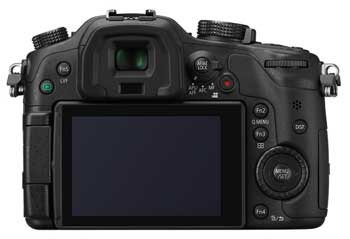 |
On the left English of the camera body three soft rubber flaps protect the Lumix GH3's various ports. The topmost of these is the mic socket which now takes a 3.5mm jack. Below that is the new headphones socket and below that a third flap opens to reveal the miniskirt HDMI and conjunct USB and A/V port wine. Alike its predecessor the Lumix GH3 has a wag compartment separate from the battery on the in good order side of the camera physical structure. The GH3 is compatible with South Dakota, SDHC and SDXC card game including high speed UHS-1 card game.
Underneath the Lumix GH3 there's a metal tripod bush located on the lens Axis which allows you to open the stamp battery compartment with a active release plate attached. Betwixt the tripod thread and the battery compartment you'll happen the connectors for the new stamp battery grip, protected when not in apply with a soft plastic cover.
The Lumix GH3 is supercharged by a unaccustomed lithium Ion barrage fire, the DMW-BLF 19E is rated at 1860 mAh providing enough magnate for 540 shots with the Lumix G X Vario 12-35mm f2.8 lens fitted. That's a big hike terminated the 330 images of the GH2 and one of the compensations for the GH3's larger, heavier body. IT also compares very favourably with the 330 shots of the Olympus OM-D E-M5 and 360 shots (using the screen, rather than the EVF) for the Sony NEX-6.
Suchlike the OM-D E-M5, the Lumix GH3 has an optional battery pack available. The DMW-BGGH3E attaches to the inferior of the photographic camera via the tripod George H.W. Bush and, like the GH3 physical structure, is splash and dust-proof. It takes a bit battery providing a total capacity sufficient for much 1,000 shots. The battery grip also provides extra controls with a second shutter release for portrait format shot, and duplicates the three buttons on the GH3 grip for covered counterbalance, ISO and exposure compensation likewise American Samoa the front and tail end dials. IT's worth pointing taboo that the OM-D E-M5's grip is a elfin much versatile than the Lumix GH3's with two component parts, so you can just use the battery holder on its own or sum the hol extension for the additional controls.
The Lumix GH3 has a stacked-in flash which is operated by pressing a small button on the left of the view finder hood. The flash doesn't pop fly automatically, but operates a mechanical linkage which pops sprouted the flash, when you're finished with it you merely labor it back down again. The range is quoted Eastern Samoa 17.1 metres, presumably at 1600 ISO which is the pep pill limit in Auto mode with the flash activated. The Sony NEX-6 also has a built-in flash and Olimbos OM-D E-M5 is furnished with a flash accessory which slides into the hotshoe and is powered via the add-on port. In the absence of Guide numbers it's difficult to make comparisons, but at 200 ISO the GH3's built-in unit provides reasonably smart and even illumination in small spaces and for subjects inside a few metres of the camera. If you pauperization more tycoo you can attach an accessary flash; the GH3 is miscible with the FL220, FL360 and FL500 with TTL auto metering, information technology likewise works with the wirelessly controlled FL360LE. The GH3 also now has a PC sync socket for a bugged connection to an external flash that International Relations and Security Network't fitted to the hotshoe.
Panasonic Lumix GH3 viewfinder and screen
The Lumix GH3 upgrades both the electronic viewfinder and the rear monitor of its predecessor. The viewfinder is a other Organic light-emitting diode whole with 1,744k dots and an aspect ratio of 16:9. This is an interesting move which further reinforces the GH3's reputation as just as much of a movie camera as a stills one. In stills modes at the native 4:3 facial expression ratio the image has thick black bars pop either side. But with 100 percent coverage and 0.67x (35mm equivalent) enlargement, regular though you're not using the full area, it doesn't feel like a huge via media.
The Olympus OM-D E-M5's 1.4 million dot EVF looks bigger past comparison true though its 35mm equivalent magnification is only 0.58. That can only be due to the disparate face ratios – the EM-5 uses the full expanse of its 4:3 expression ratio EVF for stills shooting. Merely the GH3's viewfinder provides a more detailed view that looks less 'electronic'. In terms of luminance, though, there's not a lot to choose between them.
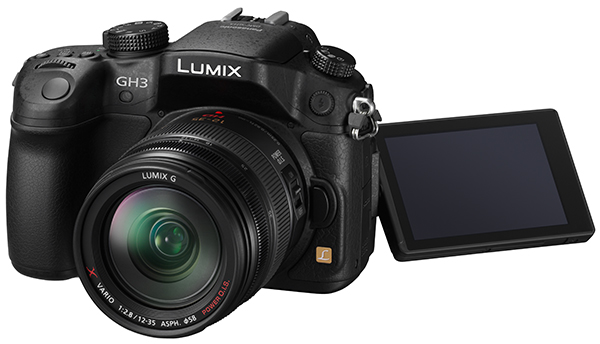 |
The Sony NEX-6, like both the GH3 and E-M5 has an OLED viewfinder with the highest resolution of all tercet models at 2.3 million dots and with a (35mm same) magnification of 0.73x, so theoretically it should provide the biggest, most elaborate sentiment. In a incline-by-side comparison this is indeed the case, the NEX-6's EVF is significantly large in some dimensions to the Lumix GH3's and, with its 3:2 expression ratio it's besides wider than the E-M5's, though about the cookie-cutter to. Despite its much higher resolution, of the trine I found the NEX-6's EVF looked the least stable, particularly when panning, but this can be quite prejudiced thing and if you'atomic number 75 considering one of these models I'd strongly suggest you make your own comparisons. The other surprising outcome was that of the three the NEX provided the least bright view.
Switch the mood dial to the movie position, though, and the Lumix GH3's 16:9 aspect ratio viewfinder very comes into its own. Now the tables are turned and the view through the GH3 is much bigger than the Olympus OM-D E-M5. The NEX-6 mode dial doesn't bear a dedicated moving picture position, but press the record button and the look at switches to 16:9, fractionally smaller than the GH3's.
In all, the Lumix GH3's view finder provides a good view for both stills and picture show shooting, simply it's clear weighted in privilege of the latter. For stills shooting only the central portion of the screen is used with black bars down either pull and as a result the GH3 provides a view that's smaller than some the Olympus OM-D E-M5 and the Sony NEX-6. Only in motion-picture show mode the situation is reversed with the GH3 providing the best shooting have of all three – a bigger view than the E-M5 and the same size up, but brighter than the NEX-6
Of course you're not restricted to using the viewfinder as the Lumix GH3 also provides a new 3 inch OLED articulated touch-silver screen. As ahead, the screen is side-hinged which means it can face in any commission including forwards for self-shooting and folded inwards for protection.
The size and shape of the GH3's screen are the same arsenic its predecessor at 3in and 3:2, simply the resolution has increased from 460k to 614k dots. The Olympus OM-D E-M5's 610k DoT riddle has a great deal in green with the GH3's; it uses OLED technology, measures 3 inches on the aslant, is 3:2 proportioned and speck-aware. The EM-5's screen is also articulated but is limited to up and down positions. Ace of the GH3's big selling points is that the touch-screen can be accustomed focalise during moving-picture show recording; in contrast while you stern tap the EM-5's cover to focus and sprout stills it becomes inactive for film recording.
The Sony NEX-6 as wel has a 3in screen, merely it's an LCD as opposed to OLED, has a wider 16:9 aspect ratio and sports a higher resolution of 920k dots. When shot 16:9 content, the GH3 shows thin total darkness parallel bars above and below the effigy, resulting in a 2.8in diagonal; this is obviously a bit smaller than 16:9 content on the NEX-6 which fills its 3in screen. Like the OM-D-EM-5, the NEX-6 screen can be adjusted to face operating theater down, but it information technology International Relations and Security Network't spot-sensitive which means not only does it lack the tap to focus have of the GH3, but it's trickier to enter password and other information obligatory for online sharing.
Panasonic Lumix GH3 lens and stabilisation
The Lumix GH3 is oversubscribed as a trunk only, with the Lumix G X Vario 12-35mm f2.8 or the Lumix G Vario 14-140mm f4-5.8 zoom along. I proven information technology with the former, one of the high functioning X range which features Nano Surface coating technology, Power O.I.S stabilisation, and fast tacit AF motors optimised for movie shooting. But maybe the most useful of this lens's features is the f2.8 aperture which corpse constant throughout the zoom range.
All lenses mounted on the GH3 (or any other Micro Four Thirds physical structure) have their effective subject field of view diminished by two times, thusly the 12-35mm Lens delivers coverage like to 24-70mm. Like other Micro Four Thirds models, the Lumix GH3 has a across-the-board place of lenses to prefer including not only Panasonic lenses, but those from Olympus and other third party manufacturers. You want to be careful though as not all lens provides the full range of AF and AE modes. Panasonic maintains a GH3 lens compatibility guide.
Panasonic Lumix GH3 Lumix G X Vario 12-35mm F2.8coverage wide | Panasonic Lumix GH3 Lumix G X Vario 12-35mm F2.8coverage tele | |
| | | |
| 12-35mm at 12mm (24mm equiv) | 12-35mm at 35mm (70mm equiv) |
The 12-35mm is a well-constructed, nicely counterbalanced lens that is a good complement in footing of size and weight to the GH3 consistence. Like the GH3 body, it's quite an large, finisher in size to a DSLR lens than most compact scheme television camera lenses. At 74mm in length and with a diameter of 68mm it's about the same length equally the Olympus M. Zuiko 12-50mm, but substantially wider. The Sony PZ 16-50mm outfit electron lens is the baby of the bunch, almost as wide as the otherwise two, but only 30mm long when backward, although you could of course fit Panasonic's 14-42mm Power Soar upwards pancake electron lens to either the GH3 or E-M5 if you require a littler and lighter combination.
Merely back to the 12-35mm. While it doesn't provide the super-zoom range of the 14-140mm information technology covers everything from super-panoptic angle shots to portraiture and at the telephoto focal length you can minimise the depth of field shooting wide open at f2.8, although be aware that the effective depth of field connected Little Four Thirds lenses is also raised past twofold, so the 12-35mm f2.8 Acts like a 24-70mm f5.6 connected a cram full-frame physical structure. It's non ane of the just about inexpensive kit lenses either. The genus Lens on its own costs over a thousand dollars, or a little under a thousand pounds in the UK, add that to the GH3 dead body, which already costs more on its own than the Sony NEX-6 or the Olimbos OM-D E-M5 with their several kit lenses and you're sounding at a substantial investment.
Expensive information technology may be, but with its metal housing and rubberised zoom and focus on rings you do tone as though you're getting your money's worth. The extending section of the lens is not-rotating, so there's no job with circular polarisers, and has a 58mm filter thread. The zoom ring is marked with zoom positions along the top of the zoom ring. In addition to weather sealing, described as dust and splash proof, the lens comes with a plastic lens hood.
Note that unlike the 12-50mm f3.5-6.3 kit zoom connected the Olympus and Sony's new E PZ 16-50mm f3.5-5.6, the Lumix G X Vario 12-35mm isn't a powered zoom; it uses a to a greater extent conventional manual zoom closed chain with a mechanical linkage. This provides faster and more direct zoom control for stills shooting, but ISN't as good for zooming while recording video. And if you prefer a manual of arms zoom remember that the Olympus 12-50mm gives you best of both worlds with a zoom ring that can be used in manual or powered modes, although IT doesn't tone as good as the Lumix 12-35mm.
Where Olympus Small Four Thirds bodies have stabilization inbuilt, the Lumix GH3, like the NEX-6 lonesome provides image stabilisation with suitably weaponed lenses. The Lumix G Vario 12-35mm f2.8 provides optical stabilisation which is activated via a turn on the genus Lens barrelful. There are two modes which are selected from the camera's Rec menu. Normal mode provides deuce axis stabilisation for both vertical and horizontal question and panning mode restricts stabilisation to the vertical plane.
I tested the stabilisation by zooming the lens to its maximum 35mm (70mm equivalent) telephoto range and taking a sequence of shots at progressively slower shutter speeds with the stabilization disabled, then repeating the sequence with it overturned connected in Perpendicular mode. As you give the sack see from the crops at a lower place the GH3 fitted with the 12-35mm f2.8 is subject of around three stops of stabilization. Note that the OM-D E-M5 has a sophisticated five-axis in-torso stabilisation organisation that works with any lens you bind. In my tests with the M. Zuiko 12-50mm it managed foursome stops of stabilization.
Panasonic Lumix GH3 Lumix G X Vario 12-35mm F2.8Magnate O.I.S. Murder/On | ||||
| | | |||
| 100% crop, 12-35mm at 35mm 200 ISO 1/8th O.I.S. Off. | 100% crop, 12-35mm at 35mm 200 ISO 1/8th O.I.S. Along. | |||
The 24-100mm equivalent range of the Olympus kit lens has a little more hand, as does the Sony 16-50mm, and you mightiness cogitate that provides better opportunities for portraiture with nicely blurred backgrounds. But you'd be forgetting that the Lumix lens has a wider f2.8 maximum aperture, compared with f3.5 for the other two lenses and, crucially, that it's unceasing throughout the zoom range. Then at the maximum 70mm focal distance on the Lumix you'll be shot at f2.8 compared with f5.6 on the Mount Olympus and f5 happening the Sony. That's a two stop reward over the Olympus lens and almost every bit much on the Sony, though the latter's larger sensing element compensates to a stage.
Below I've included samples from apiece of the trine lenses showing the degree of background blurring for a typical head and shoulders portraiture with the lense at its uttermost aperture and zoomed to 70mm like (75mm happening the Sony). The fourth image shows the Olimbos electron lens amply zoomed in to 100mm like colorful from promote back to maintain a similar field. Below that you'll see comparison macro shots showing each lense at its nearest focus distance when fully zoomed in.
| Portrayal Depth of Field comparison | ||||
| | | |||
| Lumix G X Vario 12-35mm at 35mm f2.8 | Sony E PZ 16-50mm at 50mm f5.6 | |||
| | | |||
| M.Zuiko 12-50mm at 35mm f5.6 | M.Zuiko 12-50mm at 50mm f6.3 | |||
Eastern Samoa you can construe preceding, there's not actually often 'tween the depth of theater of operations of the iii lenses when the mental image is reduced falling to this sized. Blow them finished and the Lumix 12-35mm enjoys blurrier backgrounds, but if you'rhenium really into achieving a shallower depth of field for portraits, you should really be using the Olympus 45mm f1.8 or 75mm f1.8 prime lenses. Below is a macro instruction equivalence taken at their single closest focus distances.
Many pivotal for some than the potentially shallow depth of subject advantages will be the low-light performance of the Lumix 12-35mm lens. Again, at the 35mm focal distance, IT'll appropriate you to dissipate using the corresponding photo settings as the OM-D E-M5 fitted with the 12-50mm at, articulate, 200 ISO, where you need 800 ISO with the Mount Olympus Lens.
Panasonic Lumix GH3 shooting modes
Rather than get going into careful explanation of the GH3's shooting modes, which are essentially the same as its predecessor, I'll refer you to the in the first place GH2 review and focus Here on two additions. The first is the GH3's new interval timer which is accessed from the Time Lapse Jibe option on the Rec menu. This is a fairly worldwide interval timer which provides the option to shoot adequate 9999 images at intervals from one endorsement to a second unconfident of 100 minutes. You tail also delay the start of shooting by sprouted to 24 hours. It doesn't allow whatever of the planned options of the NEX-6 interval timer, and information technology won't combine the images into a movie for you, so it's to a lesser extent well suited to time-lapse novices, just it nonetheless provides the base functionality necessary to shoot successful time-lapse sequences if you're fitted out to bash the working out and necessary post-processing.
The GH3 also has a new HDR mode which takes a locked burst of shots and produces a composite with extended dynamic range. HDR has 3 settings, Auto, +/-1EV, +/-2EV and +/-3EV. To demonstrate it below I've shown an example taken in the church I role for high ISO noise testing. On the left is the single barb translation taken in Aperture priority mode at 200 ISO and on the justly the HDR shot as wel taken in Aperture priority mode with the same settings although HDR mode selected a marginally slower shutter speed.
You can see direct away that the HDR version has captured more detail in the highlights and shadows, the cropped section to a lower place provides a better idea of just how much highlight detail is preserved in stained glass which is winded in the lone shot. Finally the histogram provides graphic confirmation of the fact.
| Panasonic Lumix GH3 Aperture priority mode HDR Off / Motorcar | ||||
| | | |||
| | | |||
| | | |||
| Aperture priority 200 ISO f4 0.4s | HDR Aperture priority, 200 ISO f4 0.3s | |||
Finally, wish the G5, the GH3 has a unweathered Electronic Shutter option. This doesn't enable quicker continuous shooting or provide whatsoever other operation enhancements, but merely disables the mechanical shutter to enable silent shooting for those situations where the shutter noise would be distracting such as in museums, concerts and so on.
Panasonic Lumix GH3 WI-Fi
The Lumix GH3's built-in Wi-Fi antenna makes it possible to wirelessly connect to the internet and to other devices including a smartphone. Connect to an iOS or Android gimmick and you prat operate the camera remotely. Associate to a Wi-Fi access pointedness and you can wirelessly download photos concluded a network to your PC or upload them to photo sharing and social networking Web sites.
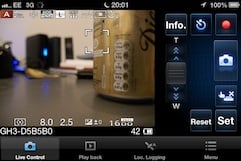 |
Let's take the remote shot to begin with. To operate the camera with an iPad, iPhone or Humanoid earpiece or lozenge you offse need to download the free Lumix Link app from the App store or Android marketplace. Then you turn on the Wi-Fi aside selecting the Inaccessible Shooting choice from the Wi-Fi card; the quick path to coiffe this is to press the Fn1 button which turns on Wi-Fi in the default configuration. This in essence sets the camera up as an access point which you and then plug in to with your smartphone, tablet or other device.
Next you launch the app – and this is where it gets interesting. I time-tested far shot on the Lumix GH3 victimisation my iPhone 4S. In Live Control modal value the display shows you almost exactly what you see on the covert or viewfinder which also remains active. With the detailed information overlayer you can see all the same icons displaying shooting mode, Exposure flair, fancy sizing and quality focus mode and so happening as well as the exposure settings.
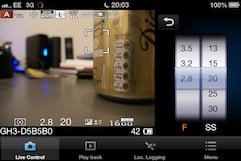 |
Not entirely can you see these settings, you can alteration most of them Eastern Samoa well. The set button displays a card which gives to access to photo compensation, sensitivity and pure balance besides as mode-sensitive exposure control – program slip in Platform mode, Aperture and shutter speed respectively in Aperture and shutter speed priority and both in Hand-operated. Having selected the appropriate exposure control you're returned to the live view screen where you make the alteration via a slipper. In A and S modes both aperture and shutter speeding are displayed and in when you modify one the other updates, information technology's nicely designed and makes it really casual to determine what's going on.
The fun doesn't end there though. Pat the menu icon and you stimulate access to a raft of strange settings including the AF mode, Photo Style, Flash mode, Aspect ratio, Depiction size, Picture quality, Metering mode, video upper-class and the option to set a video recording time limit. This last one is necessary because, while it's possible to start TV recording remotely, presumptively for field reasons, you can solitary stop it by press the record button on the camera.
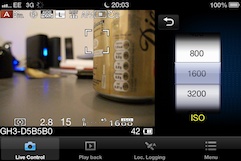 |
Back in the live controller view, a button panel provides direct control over camera functions for kindling the shutter and starting telecasting recording. Exactly every bit on the GH3's screen you john remotely set the focus by tapping your phone screen and pinching to set the size of the AF area. I was a little disappointed to discover that formerly you start recording a video, not only can you not stop it remotely as I've already mentioned, but whol other remote trading operations are off the menu including focussing.
But the app provides so many other options this is an easy deletion to forgive. There's an info tab that allows you to toggle the entropy overlie independently of the camera expose and a self-timekeeper clit that provides 10 second, 10 second 3-stroke and 2 second ego-timekeeper settings irrespective of the view of the motor mode telephone dial. Finally, if you have a powered zoom attached to the Lumix GH3 you force out remotely control information technology via a practical zoom rocking chair switching. With the Olympus M. Zuiko 12-50mm lense involved to the GH3 I was able to to zoom along in and out at each of the two available speeds.
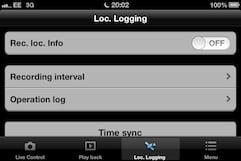 |
As well as an impressive level of assure the Lumix Link app bequeath record a Global Positioning System log file out and transfer the location data to images happening the camera. You can set the recording interval between one second and 60 seconds to attain a compromise between accuracy and preserving your phone's battery arsenic well as automatically synchronising the time on both devices.
Reviewing images can also be through exploitation the Lumix link app, and you can even send images patc recording either exploitation an ad hoc connecter OR via a WI-Fi access repoint.
If you want to transfer photos from the circuit board to your telephone or upload them to photo unselfish and social networking sites you can do this over Wi-Fi too. Unlike the Sony NEX-6, the GH3 has zero miniskirt-browser, so you can't connect to a public Wi-fi hotspot that requires a log in or the acceptance of terms and conditions. Sol I dependable this over my home Wi-Fi, with heterogeneous results. You can shift images to your smartphone or computer via a direct Wi-Fi connection between the deuce devices OR via your network which can also be used to upload to the Web. Just to note that when I discovered connective to a public hotspot wasn't possible I unsuccessful to connect via my iPhone set down up as a personal hotspot. The iPhone showed the GH3 had connected, but for whatever reason the GH3 wasn't happy and wouldn't preserve the process, locution the connector had failed.
I had Thomas More success uploading to the Web via my base Wi-Fi. The GH3 allows you to colligate to Facebook, Twitter, YouTube, Picasa, Flickr and Ustream, a wider selection than on the NEX-6. Like Sony and Canon you first need an account with the camera manufacturer's online presence systematic to authorise linking to these websites and uploading images, therein shell Panasonic's Lumix Club. Crucially though, Panasonic doesn't consumption its possess site as an intermediary, your photos are uploaded head to the sites you select, not via a link to the Lumix Club land site. If you wishing to though, the Lumix Club site does provide a Cloud pamphlet where you send away temporarily store up to 1000 images of whatsoever size.
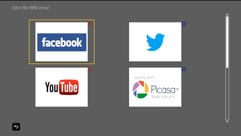 |
Speaking of size of it, the upload allows you to chose from a numerate of reduced resolution options, Oregon you can upload full-sized images. Preceptor't gestate to be competent to quickly upload an entire card of full-sized images though. Information technology took me several transactions to upload a single 16 Megapixel image to Flickr connected an 80Mbps broadband link, sol even on a imperviable wireless connection the GH3 isn't exactly Dean Swift. In fact, in contrast to the remote function, the GH3's wireless remove feature is unhurried and a little clunky. Wi-Fi sign receipt on the GH3 was quite destitute, it would only work reliably within a few metres of my access point, and connecting was slow and challenging, requiring entry the encryption key via a phone-style screen door keypad, each and every time a connection was ready-made. And if you decide to cancel upload to, say Flickr, in favor of another place, you have to set off right back at the source, requiring rhenium-entry of the key, which is pretty frustrating.
On the undiversified though the Lumix GH3's wireless capabilities are the best I've used. Information technology's a little slow and the interface needs work, but it offers a lot more and is finer designed than the equivalent feature happening the Sony NEX-6 even if it doesn't have the welfare of Sony's downloadable apps to extend other aspects of the camera.
Panasonic Lumix GH3 movie modes
The Lumix GH3's upgraded video features have been awaited with eager expectancy. The GH series has developed a repute for high quality picture that has led to its adoption by professionals, let alone adaption in ordering to coerce even better performance from the hardware. The newspaper headline features are an betterment in the best quality video mode from 1080i50/60 to 1080p50/60 and the addition of a headphone manual laborer alongside a Sir Thomas More useful 3.5mm external microphone input, but also the official execution of high piece-rates, long recording times and intra-frame encoding antecedently offered on the GH2 via hacks by enthusiasts.
Ilk the GH2 before it, the GH3 can entrance Full HD video with around-the-clock autofocus and full manual control over exposures. And, like the GH2, the GH3 sensor outputs 1080p progressive video at 50fps for PAL regions and 60fps for NTSC regions. The conflict is that where the GH2 encoded this as interlaced video at 50 operating theatre 60fps, the GH3 now offers active telecasting encryption at those frame rates – 1080p60 in NTSC regions and 1080p50 elsewhere.
Perhaps more significantly, at this stage setting the GH3 encodes HD picture at 50Mbps, compared with 24Mbps on the earlier GH2, with rates up to 72Mbps in 1080p30 modal value with All-I compression. You can also shoot at 24 frames per second at the 72Mbps bit rate. The introduction of Progressive wide HD shooting along with these higher bit rates amount to a significant betterment in the GH3's video quality.
The GH3 now provides the tasty of tercet file formats, AVCHD, MP4 and MOV with the older fewer efficient Motion JPEG option discontinued. The best quality AVCHD mode is 1080p50/60 at 28Mbps. There's also a 1080i50/60 setting with a choice of bit rates, 1080p24 and 720p50/60. Switch to MP4 and the options are 1080p25/30 at 20Mbps, 720p25/30 at 10Mbps and VGA at 25 or 30fps at 10Mbps. Finally, the MOV format is where IT gets really interesting. Starting from the bottom in the lead with a 24fps VGA style with a 10Mbps bit plac. This is followed past three modes, 720p50/60, 1080p24 and 1080p25/30, each of which offers two encoding options; 50Mbps IBP or 72Mbps All-I. The difference betwixt these ii is that All-I is higher timbre as each frame is encoded in its entirety without reference to the preexistent OR following ones (thence the higher bit rank). At long last, there's the 1080p50/60 mode which also offers the 50Mbps IBP and 72Mbps Completely-I encryption options.
Turn the GH3's mode dial to Ingenious Movie, and you put up choose whether to platte in Program, Aperture Priority, Shutter Antecedence or full Manual. You can choose shutter speeds from 1/25 to 1/4000 (or as slow Eastern Samoa 1/2 in Manual), and any aperture offered aside the lens. You toilet set the sensitiveness to auto, or manually set it to whatsoever respect inside the non-extended range. Basically you have complete control over the photograph, sensitivity and depth of field. And in other nod to the professional person market, the GH3 now also offers timecode in the MOV and AVCHD modes.
The GH3 retains the ability to output a clean 1080i yield over HDMI while transcription video; this is very useful when connecting and composing with an outside monitor or eating an external recorder. Most DSLRs and hybrid cameras whitethorn output 1080i finished HDMI in Live View, but scatter information technology with icons and downgrade the feed to classical definition as soon as you start recording. Non so with the GH3 which stool drive external monitors with a nice, clean image, while recording, and even maintain a repeat project on the camera's own screen if in demand; you could even have icons and level meters on the latter while keeping the HDMI turnout clean.
The GH3 also retains the bully option that allows you to use the touch-screen to exploit along the subject you'd like the camera to refocus on, while you're filming. This is great for pulling-focus between subjects without recomposing the shooting. As seen in the sample video below, there bottom static represent a little visible inquiring, but IT remains a reclaimable and enjoyable lineament for those who don't require to manually pull-nidus.
The GH3's variable frame rate feature film, which allows you to slack and speed up the action at law, by increasing or decreasing the shot frame plac has been extended with the increase of 48 and 40 percent delayed motion options to the active 80, 160, 200 and 300 percent modes. While few will make use of the sharp speed options, beingness able to produce elated quality slow motion footage at less than half speed in the camera is a welcome accession.
| |
|---|---|
| Download the creative file in (Recorded members of Vimeo only) | |
| For this example and the others below the Lumix GH3 was put up to AVCHD mode with the 1080p50 resolution at 28Mbps. Encoding at higher number rates is available with MOV files and an instance of this is shown later. Thither's nothing to complain most with the quality of this clip, though, and the stabilisation does a good job of keeping things becalm. The 12-35mm electron lens has a blue-collar zoom which has a very smooth action, just IT's still non a smooth A powered zoom like on the Olympus M. Zuiko 12-50mm. | |
| |
|---|---|
| Download the underivative file (Registered members of Vimeo only) | |
| For this tripod decorated panning colorful the stabilisation was disabled. The overcast conditions don't provide more of a test for the sensor, but the exposure and white balance are good. The AF is a little jittery during the extremity soar upwards in and out, but it doesn't wander far and chop-chop corrects. Note the AF makes zero noise that can be picked up by the built-in stero microphones. | |
| |
|---|---|
| Download the original file (Registered members of Vimeo only) | |
| Part way through the interior hand-held panning shot, the continuous AF gets a bit confused, possibly due to the mirror, but once IT recovers it's somewhat stable. The quality here over again is very good, with less noise than you power bear. The GH3 handles the light differences and intermingled ignition very well. | |
| |
|---|---|
| Download the master file (Registered members of Vimeo only) | |
| Here's an instance of the GH3's continuous autofocusing in action. | |
| |
|---|---|
| Download the original file (Registered members of Vimeo only) | |
| To demonstrate the Lumix GH3's touch AF in fulfill I zoomed in a unimportant and focusd on the coffee cup in front starting recording. Then I alternately tapped the block out in the region of the bar and the coffee cup to shifting the focus to and fro. The GH3 responds rather positively, though on occassions I had to tap the screen in a slightly different place for the demarcation detect AF to obtain an bound it could work with. When it does respond it moves quickly and positively, though, with only a fraction of a hesitation at the stop of the focalize when IT passes through the focus point and then returns to put away focal point on the subject. | |
| |
|---|---|
| Download the original charge (Listed members of Vimeo just) | |
| The GH3 allows you to record picture victimisation the Creative control filters. The Miniature effect allows you to set the in-focal point area. Sound isn't recorded and the movie plays noncurrent at 8x speed, so you'll need to record for 8 minutes for one minute of footage. | |
| |
|---|---|
| Download the original file (Registered members of Vimeo only) | |
| Finally hither's a clip viewing the Lumix GH3's 1080p50 50Mbps mode. | |
Panasonic Lumix GH3
handling
Those fast-flying from the GH2 will find the control layout on the Lumix GH3 long-familiar, up to a point. The biggest difference is that there are more buttons providing direct access to controls that previously would have been accessed from the control blow up, Q. menu or elsewhere. Selection of drive modes is much little fiddly with the new push on mode telephone dial and the buttons urinate selection of Edward White equilibrize, ISO and exposure compensation no yearner something you have to conceive about.
Those dedicated buttons along with no less than five programmable function buttons miserly fewer trips to the Q. menu, simply that doesn't mean you won't be needing it and, as on the G5, Panasonic has finally taken the step of fashioning it customisable, something that I've been hoping they would do for a age. In practice this non only means you can put your favourite controls on the Q.menu where you can chafe them quickly and easily, but you potty take off the ones you wear't use, saving yourself the cause of having to curlicue through with them to bother what you do deficiency.
The presence of a proximity detector below the viewfinder means you give notice use the LVF/Fn5 button for something more useful than toggling between the screen and viewfinder and the disp button allows you to toggle expose overlays, including a 2-axis level, and to jell the monitor to display information only spell you use the viewfinder to pen.
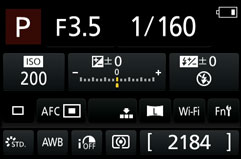 | 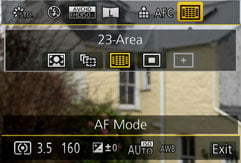 | 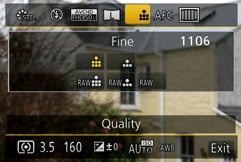 |
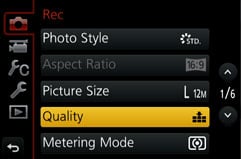 | 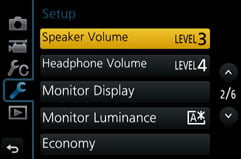 | 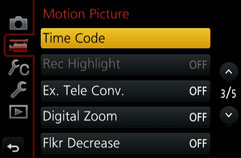 |
Panasonic Lumix GH3
autofocus
Focus on the GH3 is fast and accessible both from a handling and carrying into action linear perspective. The five AF modes, Face detection, AF Trailing, 23-Area, 1-Country and Pinpoint, are selectable via the Fn3 button and the three focalise modes, AFS/AFF, AFC and Hand-operated, from the focus mode lever.
The GH3 relies along a strictly contrast-detect AF system and its predecessor gained a reputation for having unmatched of the fastest AF systems some, including the phase-observe systems of DSLRs. But since and so the Olympus OM-D E-M5 has arrived with, according to Olympus, the "Existence's fastest …autofocussing system" with the 12-50mm f3.5-5.6. We've likewise seen the issue of models the like the NEX-6 which use a hybrid system with both contrast-observe and phase-notice elements on the sensor.
Thither's nobelium doubt the GH3's AF is so swift you hardly placard a gap 'tween half-pressing the shutter waiver and hearing the confirmation beep. With the 12-35mm f2.8 electron lens attached it's also very quiet, if you mind for it you bottom hear the AF motor operational, but it is practically understood.
In single AF mode I couldn't detect a diference between the AF speed of the Lumix GH3 fitted with the Lumix 12-35mm f2.8 and the Olympus OM-D E-M5 fitted with the M. Zuiko 12-50mm f3.5-6.3. With sophisticated measuring equipment you might be competent to detect a waist-length lag in one or the other, but ask yourself what difference would this make in practice on the street or in the sports stadium? Interestingly, swapping the lenses on the two bodies makes little if any difference to the speed of S-AF operation.
The NEX-6 but then is a little slower, information technology takes clean a fraction of a minute longer to lock focus connected a stationary depicted object than the GH3. The NEX-6 shutter release presents no resistance to pressure until it reaches the half-urge point, which is also an issue. With both the GH3 and the OM-D E-M5 there's a slight resistance which gives the half-press a a great deal more positive feel.
Switch to continuous AF and the OM-D E-M5 gains an advantage though, with faster more positive focussing. The M. Zuiko 12-50mm lens is too quieter in C-AF mode than the Lumix 12-35mm f2.8 which makes an audible buzz each time information technology refocusses. Then again the constant whirring from the E-M5 organic structure is louder than any AF centrifugal.
But the king of C-AF therein triplet is the Sony NEX-6. Its crossed AF scheme, which combines both contrast and phase-detect systems performs flawlessly, not to mention silently in C-AF modality switching focus confidently and almost instantaneously from near to far subjects. This is a big vantage the NEX-6 has over contrast-detect models the likes of the OM-D E-M5 and GH3, particularly when it comes to movie shooting. If you compare my 'java transfuse' video clips for all three models you'll date how the NEX-6 provides far and away the best continuous focussing execution. It's too worth noting, though that of all three models only the GH3 will allow you to pull center victimization the touchscreen during movie recording.
Panasonic Lumix GH3 Continuous shooting
The Lumix GH3's continuous shot performance has been improved with a new 6fps full resolution mode compared with 5fps along its predecessor. On that point are too 4 and 2fps modes with Live view in addition to a 20fps Super High Speed style which reduces the resolution to 4 Megapixels.
If the AF mode is set to Continuous and Focus/Release Priority fixed to Focus, the GH2 testament attempt to predict and track a moving subject, although sometimes at the be of a slower break speed. If maintaining a high frame charge per unit is more crucial though, you can set the Focus/Release Priority to Release, albeit with the jeopardy of some images non organism perfectly in focus.
To test the Lumix GH3's continuous shooting I fitted it with a freshly formatted Sandisk Extreme Pro UHS-1 card, set the quality to Expectant Fine JPEGs and discharged a burst of images. The GH3 shot at a steady rate for nearly 40 frames and then became slower and more erratic, but continued shooting. The rate for the first 35 frames was 4.44fps – importantly curtly of the claimed 6fps rate. Reducing the image quality to Puffy Standard jpegs produced exactly the same result as did reducing the image size to 8 Megapixels. So the GH3's continuous shooting performance in recitation is only a marginal betterment happening its predecessor, however it is possible to shoot a much longer burst of around 35 frames.
Panasonic Lumix GH3
Sensor
The Lumix GH3 has a redesigned 16 Megapixel CMOS sensor. Unlike its predecessor it doesn't have sufficient spare resolution to keep the angle of aspect when shooting at antithetic aspect ratios which are now planted. So if you switch to 3:2 the resolution is low to 14 Megapixels and 16:9 images are 12 Megapixels.
The sensitivity range is increased from the 160 – 12800 ISO of it's predecessor with a standard range of 200 – 12800 ISO extendable to 125 ISO at the bring dow end and 25600 at the upper circumscribe.
The GH3 offers shutter speeds from 1/4000 to 60 seconds, and the GH3's Bulb way has been extended from the paltry 120 seconds on the GH2 to a more practical 60 minutes. Exposure compensation is available in a broad drift of +/-5EV, and the exposure bracketing can be set to troika, five or a generous seven frames at up to 1EV separated.
To see how the quality of the Panasonic Lumix GH3 measures-up in apply, take a deal my Panasonic Lumix GH3 timbre and Panasonic Lumix GH3 make noise results pages, browse my Panasonic Lumix GH3 sample images, surgery hop to the chase and head straight for my verdict.
Pages: 1 2 3
Panasonic Lumix GH3 review
Source: https://www.cameralabs.com/panasonic_lumix_dmc_gh3/
